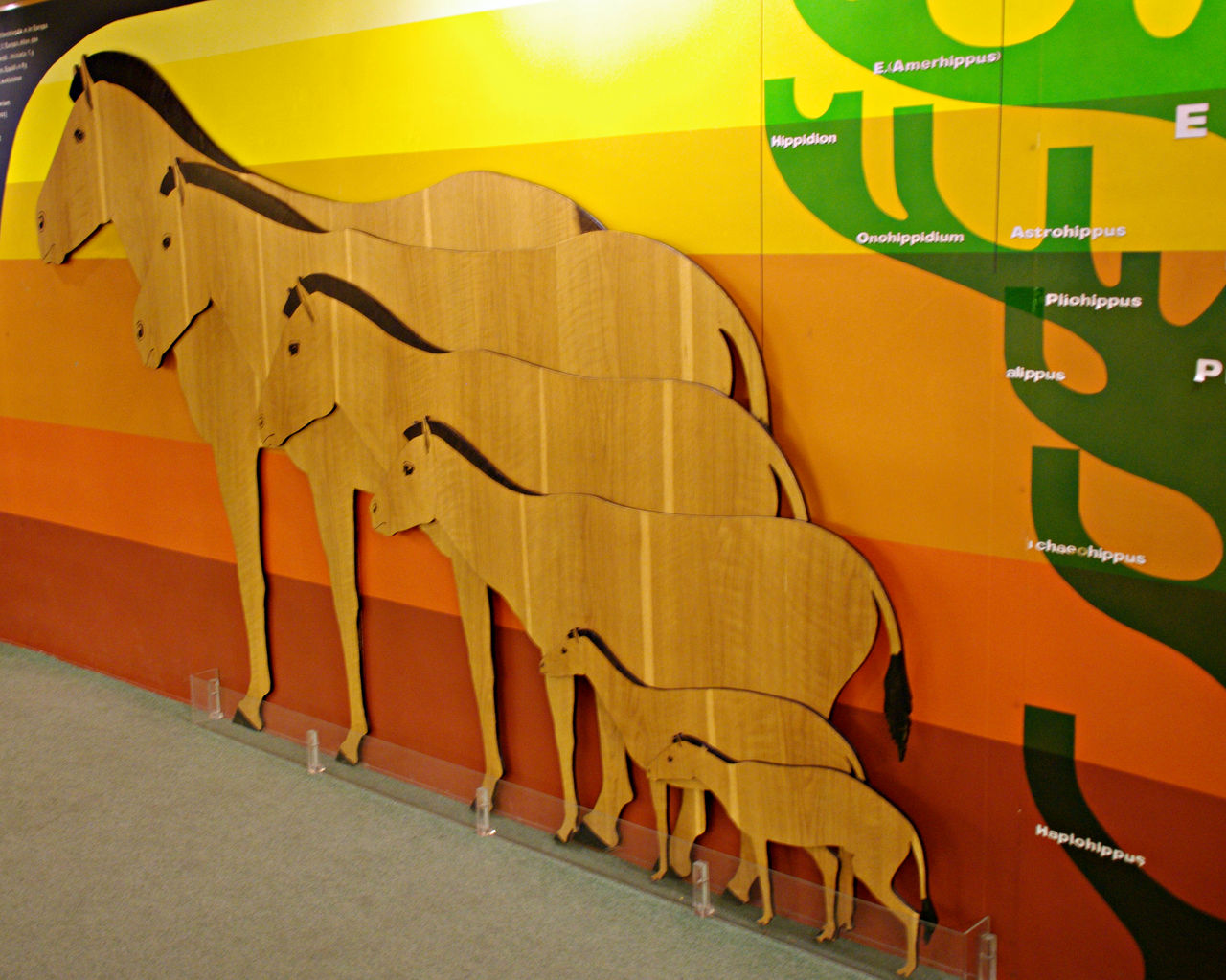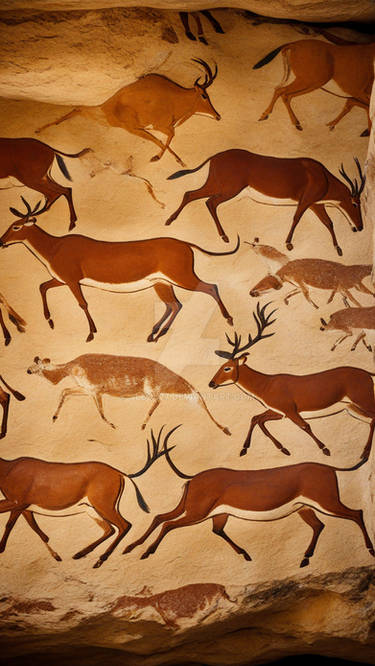ShopDreamUp AI ArtDreamUp
Deviation Actions
Description
В этом фото вы можете наблюдать лучше эволюцию лошадей: всё происходило 55 млн лет назад, во время Эоцена, из-за появления маленького лошадки, Eohippus или Гиракотерии (Hyracotherium leporinum). Он был такой же большой, как собака и у него были четыре пальца на передних ногах и три пальца на задних. А потом была очередь Haplohippus, который мы увидели тут: [link] После 50 млн лет, приспособляемости к среде, которая тем временем превратилась, принесли этих животных глубоким изменениям. Итак, лошадь (Equus caballus) как мы знаем сейчас, становилась животное полностью пригодное для бегов. Лошади появлялись в Северной Америке, и в Миоцене (около 10 млн лет назад) они мигрировали в Евразию. Своя эволюция часто показывавшая как классический пример теории эволюции, учитывая, что присутствуют много ископаемых свидетельств изменения вида.










In this photo you can observe closer the evolution of equines: everything started 55 mln years ago, during the Eocene, with the appearance of a little "pony", the Eohippus or Hyracotherium (Hyracotherium leporinum). It was as big as a dog and it had four-hoofed toes on each front foot and three-hoofed toes on each hind foot. Later it was the turn of the Haplohippus, which we saw here: [link] After 50 mln years, adjustments to environment, that meanwhile was changed, led this animals to deep modifications. So, the horse (Equus caballus) as we know nowadays, became a fully suitable animal for runs. Equines appeared in North America, and they migrated to Eurasia in the Miocene epoch (about 10 mln years ago). Their evolution is often shown as classic example of theory of evolution, considering that there are many fossil proofs of the change of look.










In questa foto potete osservare meglio l'evoluzione degli equidi: tutto ebbe origine 55 milioni di anni fa, durante l'Eocene, con la comparsa di un cavallinuccio, l'Eohippus, o Iracoterio (Hyracotherium leporinum). Era grande quanto un cane e aveva quattro dita fornite di zoccolo negli arti anteriori e tre in quelli posteriori. Successivamente fu il turno dell'Haplohippus, che abbiamo visto qui: [link] Dopo 50 milioni di anni, gli adattamenti all'ambiente che nel frattempo si era trasformato, portarono questi animali a profonde modifiche. E così il cavallo (Equus caballus, come lo conosciamo noi oggi, divenne un animale perfetto per le corse. Gli equidi comparvero in Nord America, e nel Miocene (circa 10 milioni di anni fa) migrarono in Eurasia. La loro evoluzione è spesso indicata come un classico esempio di teoria evolutiva, considerate le diverse testimonianze fossili del mutamento di aspetto.
In this photo you can observe closer the evolution of equines: everything started 55 mln years ago, during the Eocene, with the appearance of a little "pony", the Eohippus or Hyracotherium (Hyracotherium leporinum). It was as big as a dog and it had four-hoofed toes on each front foot and three-hoofed toes on each hind foot. Later it was the turn of the Haplohippus, which we saw here: [link] After 50 mln years, adjustments to environment, that meanwhile was changed, led this animals to deep modifications. So, the horse (Equus caballus) as we know nowadays, became a fully suitable animal for runs. Equines appeared in North America, and they migrated to Eurasia in the Miocene epoch (about 10 mln years ago). Their evolution is often shown as classic example of theory of evolution, considering that there are many fossil proofs of the change of look.
In questa foto potete osservare meglio l'evoluzione degli equidi: tutto ebbe origine 55 milioni di anni fa, durante l'Eocene, con la comparsa di un cavallinuccio, l'Eohippus, o Iracoterio (Hyracotherium leporinum). Era grande quanto un cane e aveva quattro dita fornite di zoccolo negli arti anteriori e tre in quelli posteriori. Successivamente fu il turno dell'Haplohippus, che abbiamo visto qui: [link] Dopo 50 milioni di anni, gli adattamenti all'ambiente che nel frattempo si era trasformato, portarono questi animali a profonde modifiche. E così il cavallo (Equus caballus, come lo conosciamo noi oggi, divenne un animale perfetto per le corse. Gli equidi comparvero in Nord America, e nel Miocene (circa 10 milioni di anni fa) migrarono in Eurasia. La loro evoluzione è spesso indicata come un classico esempio di teoria evolutiva, considerate le diverse testimonianze fossili del mutamento di aspetto.
Image size
3718x2970px 19.76 MB
© 2013 - 2024 Lynus-the-Porcupine
Comments5
Join the community to add your comment. Already a deviant? Log In
Not shown: the cutesy pastel ponies you see everywhere nowadays.



































